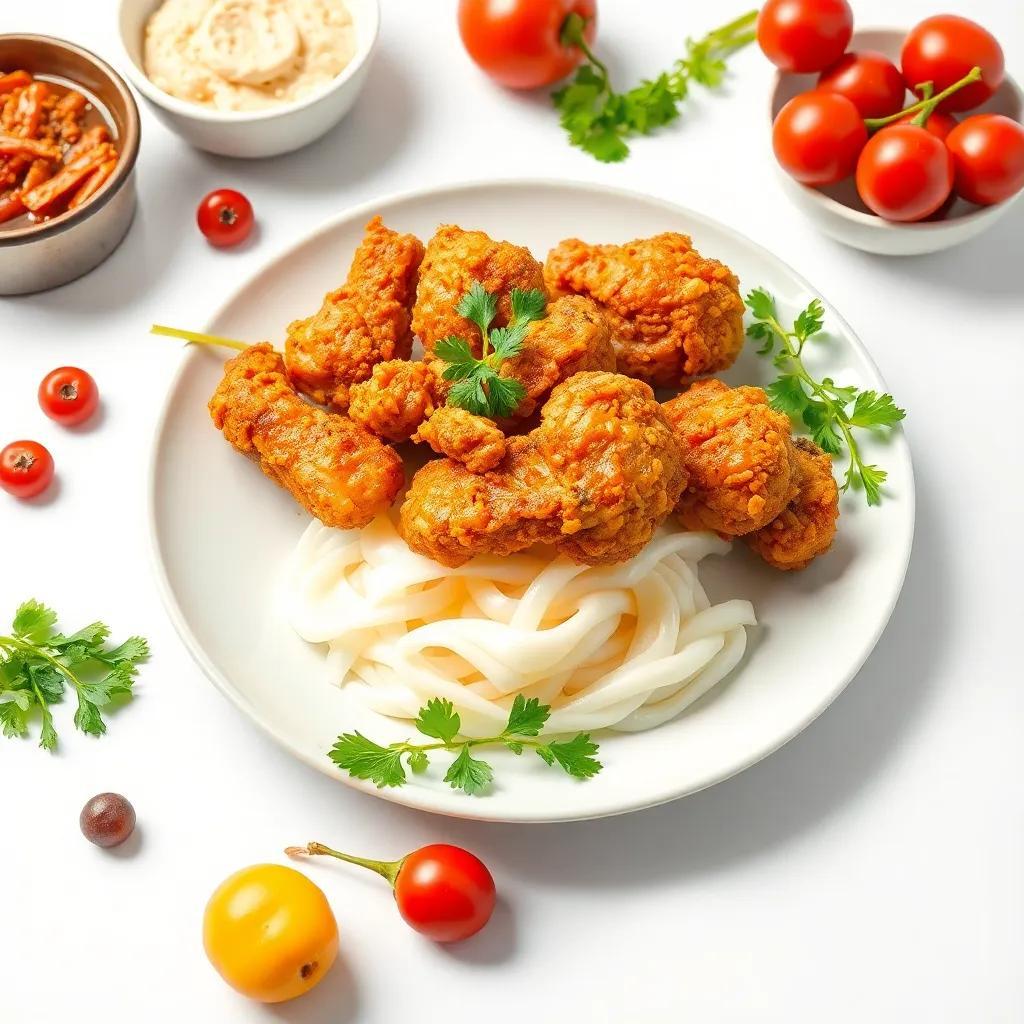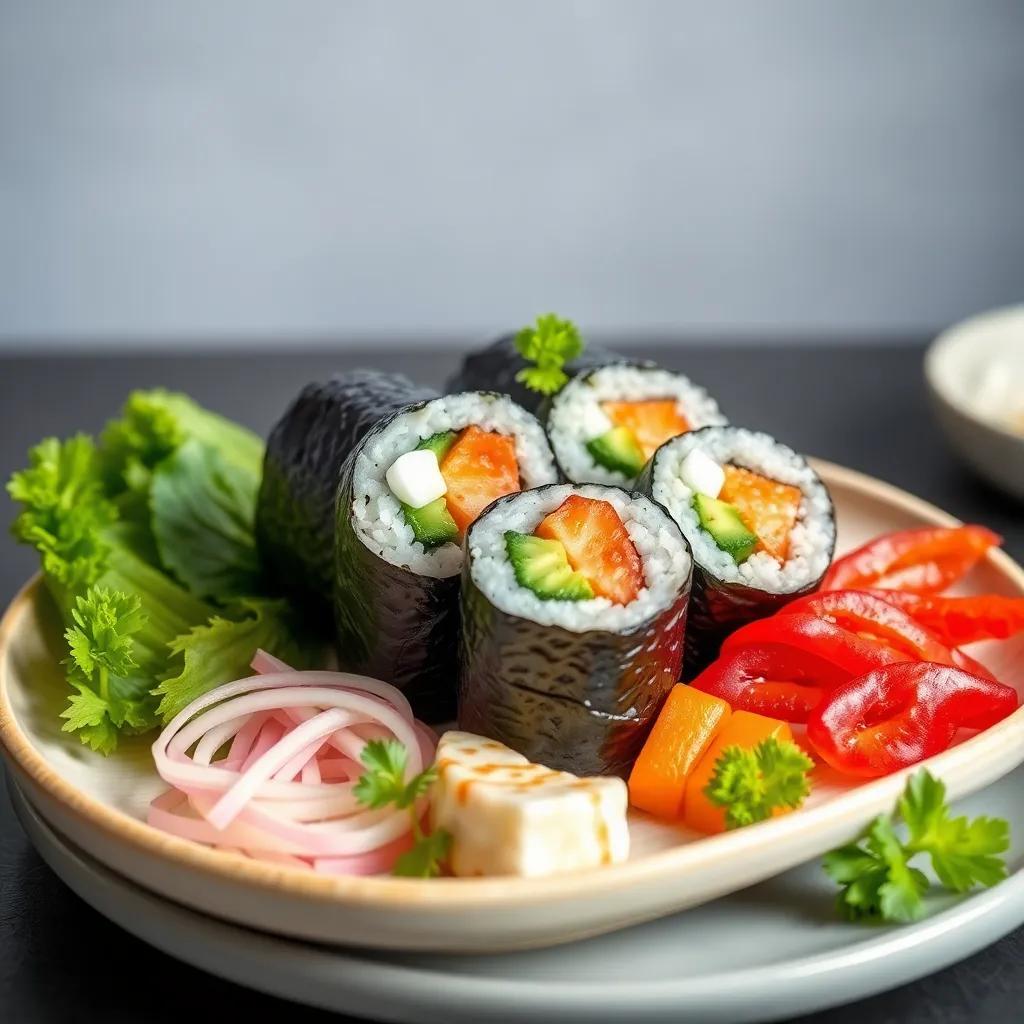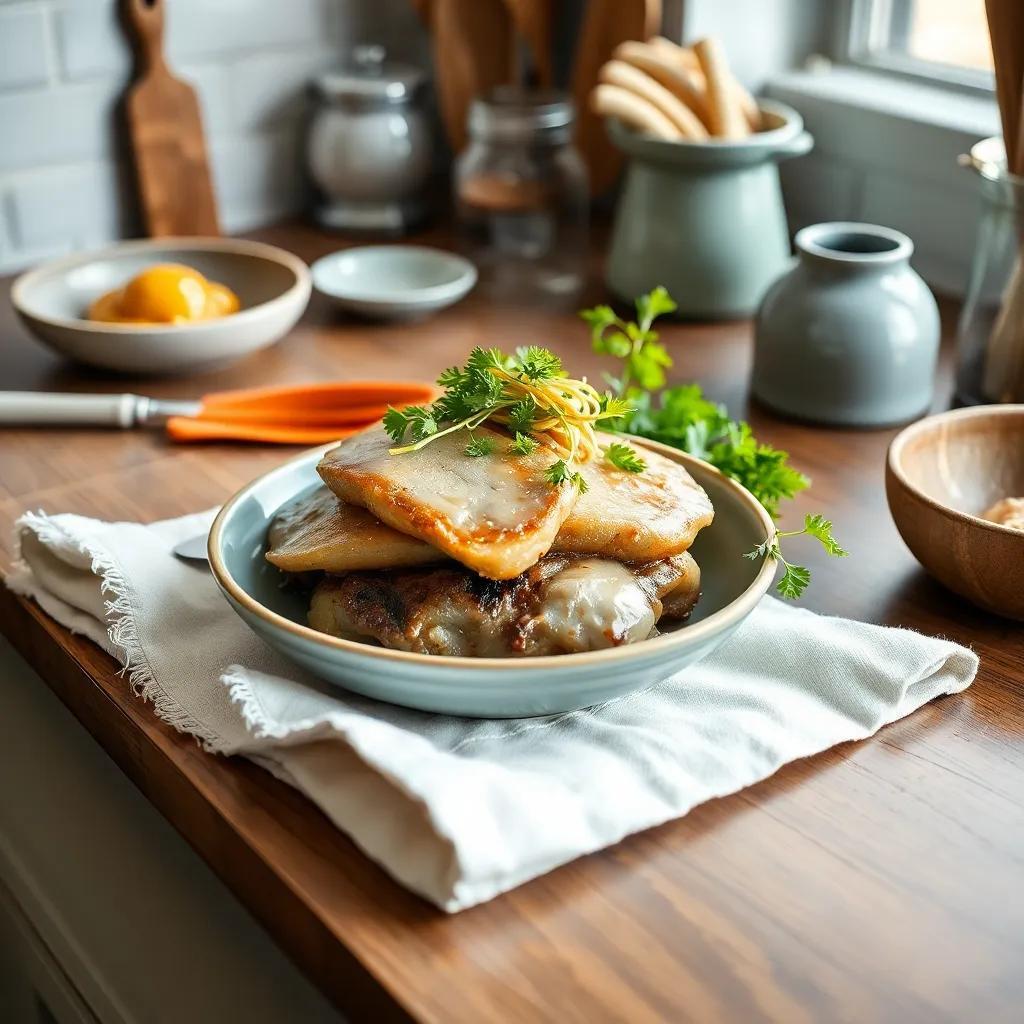Unlock the Secrets of Classic Gimbap: Easy, Kid-Friendly Korean Rolls
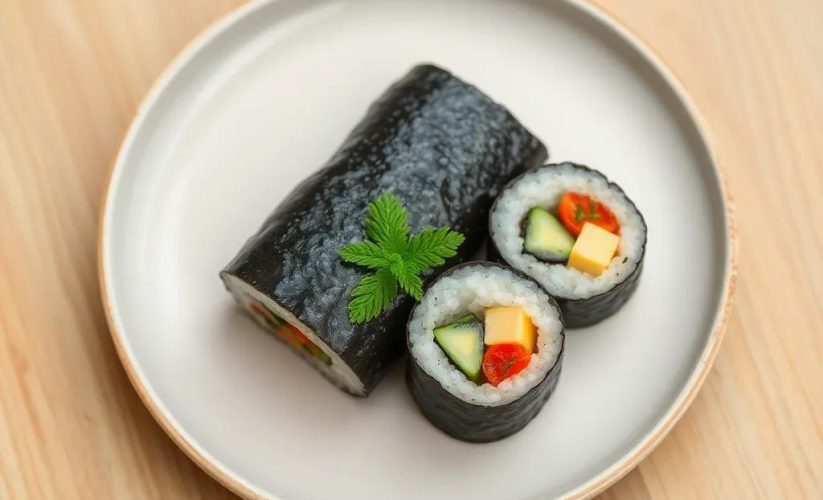
Unlock the Secrets of Classic Gimbap: Easy, Kid-Friendly Korean Rolls
🌍 Cuisine: Korean
⚙️ Difficulty: Easy
Ingredients
Nutrition Facts
250
Instructions
- Rinse the rice under cold water until the water runs clear. Cook according to package instructions and let it cool slightly.
- Once cooked, transfer the rice to a large bowl. Mix in sesame oil and salt evenly. Set aside to cool to room temperature.
- Prepare the fillings: Julienne the carrot and lightly sauté in a pan until tender. Cook the egg omelette in a thin layer, then slice into strips.
- If using beef bulgogi or ham, cook and slice into thin strips suitable for rolling.
- Cut cucumber and pickled yellow radish into long thin strips to match other fillings.
- Place a bamboo sushi mat on a clean surface and lay a sheet of seaweed on top, shiny side down.
- Moisten your hands with water and spread an even layer of rice on the seaweed, leaving about 1 inch at the top edge free of rice for sealing.
- Place a small line of each filling (carrot, egg, beef/ham, cucumber, pickled radish) horizontally across the rice, about 1/3 from the bottom edge.
- Using the bamboo mat, gently but firmly roll the gimbap from the bottom edge, tucking the fillings inside. Roll until you reach the un-rice-covered top edge and seal by moistening the seaweed edge.
- Repeat with remaining seaweed sheets and fillings.
- Brush the rolls with a little sesame oil and sprinkle with toasted sesame seeds for flavor and shine.
- Using a sharp knife, cut each roll into 1-inch slices, wiping the knife with a wet cloth between cuts to prevent sticking.
- Serve immediately with soy sauce or preferred dipping sauce.
- Store any leftovers wrapped tightly in plastic wrap in the refrigerator for up to 1 day.
Serving Suggestions
- Serve gimbap with a side of kimchi for a traditional Korean accompaniment.
- Offer a small bowl of soy sauce mixed with a dash of sesame oil for dipping.
- Pair with a simple cucumber or radish salad for refreshing crunch.
- Include fruit slices like apple or orange for a sweet contrast to the savory roll.
- Wrap gimbap slices in lettuce leaves for added texture and freshness.
- Serve as a fun lunchbox meal or picnic snack for kids and adults alike.
- Complement with a warm bowl of Korean seaweed soup (miyeokguk) for a fuller meal.
Table of Contents
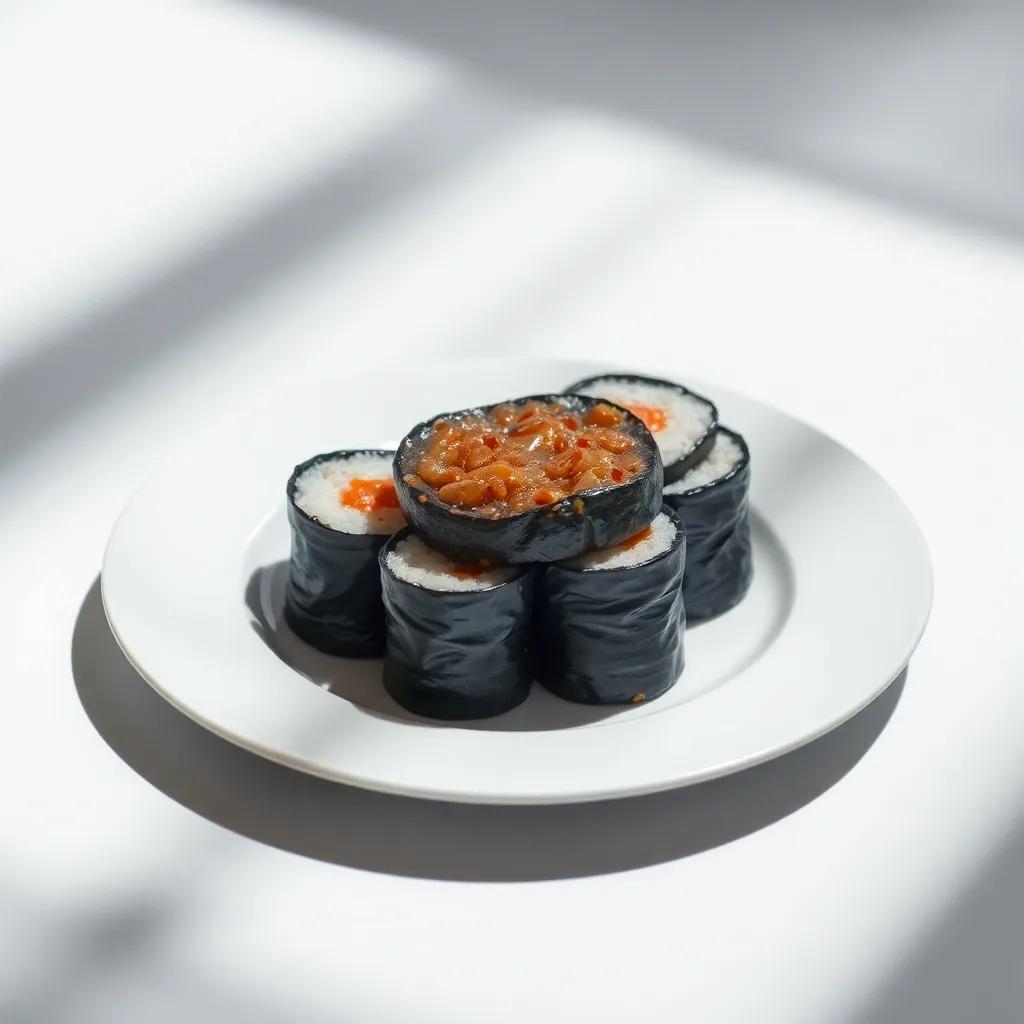
Intro
Classic gimbap is a delightful gateway into Korean cuisine that feels just right for both beginners and busy families. Its vibrant rolls are not only visually appealing but also wonderfully versatile, making mealtime fun and stress-free. What makes this recipe truly special is how effortlessly it comes together — no need for exotic tools or complicated techniques, just simple steps that even kids can enjoy helping with.
Whether you’re packing a lunchbox, preparing a picnic snack, or hosting a casual get-together, these kid-friendly Korean rolls fit perfectly. They offer a balanced bite of comforting rice, fresh vegetables, and optional protein, all wrapped snugly in crisp seaweed. Gimbap invites creativity and can be customized to suit picky eaters or adventurous food lovers alike, making it a crowd-pleaser for any occasion. So get ready to roll, slice, and savor a dish that bridges Korean tradition with everyday ease.
Ingredient Notes
When it comes to crafting classic gimbap, a few key ingredients truly set this Korean roll apart and elevate the overall experience. Understanding their roles and how to select or substitute them can make your preparation smoother and more rewarding.
Dried Seaweed (Nori):
The foundation of any gimbap roll, nori sheets provide that distinctive umami flavor and crisp texture. For the best results, look for high-quality, restaurant-grade nori that’s slightly thicker and roasted evenly. This type of nori holds up better when rolling and prevents tearing. If you’re new to Asian grocery stores or want to shop online, choosing nori labeled specifically for sushi or gimbap use ensures freshness and ideal texture. While common, some people find nori’s flavor strong; if so, mild-flavored seaweed snacks can be experimented with but may lack structural firmness.
Short-Grain White Rice:
Short-grain rice is essential due to its stickiness, which helps the gimbap hold together as you roll. Medium or long-grain rice won’t clump as well, resulting in a looser roll. When buying rice, opt for varieties labeled for sushi or Korean cooking. Cooking the rice properly—rinsing until clear water runs and slightly undercooking to maintain chewiness—can make all the difference. For a healthier twist, some swap white rice with brown short-grain rice, though the texture will be nuttier and less sticky, so rolling may require extra care.
Pickled Yellow Radish (Danmuji):
This vibrant and tangy pickled radish is a hallmark of authentic gimbap, adding a crunchy, slightly sweet contrast to the savory fillings. You can find danmuji in Korean or Asian supermarkets, usually in vacuum-packed strips or jars. If you can’t locate pickled yellow radish, mild pickled cucumbers or even crisp pickled carrots can be a simple substitute—though you’ll lose the classic brightness and slight sweetness that balances the dish. For a homemade option, quick-pickling thin carrot or daikon ribbons with a touch of sugar and vinegar works well too.
Sesame Oil:
A small but mighty ingredient, sesame oil plays a dual role: blending with the rice to impart subtle nuttiness and brushing on the rolls to add a glossy finish and extra aroma. Because its flavor is potent, using toasted sesame oil is key—it’s richer and much more fragrant than the plain variety. When buying, opt for cold-pressed or labeled as “toasted” to get that authentic taste. If you’re sensitive to strong flavors, reduce the amount slightly or use a light drizzle of mild vegetable oil as a fallback, though it won’t replicate the signature sesame depth.
By paying attention to these cornerstone ingredients, you set yourself up for achieving the perfect balance of flavors, textures, and traditional character in your gimbap. Each element contributes a distinct note that, when combined, makes the rolls truly memorable for kids and adults alike.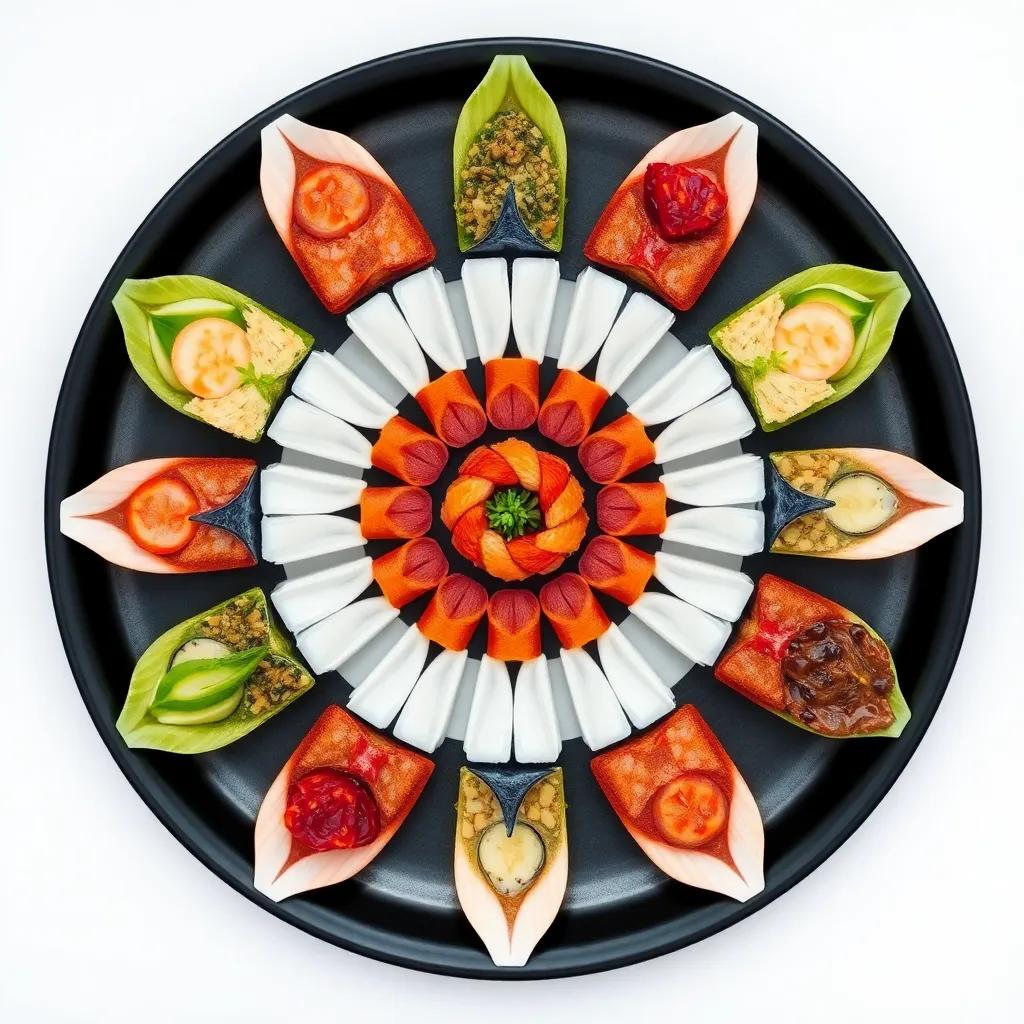
Tips & Variations
Mastering classic gimbap is easier when you have a few insider tips and flexible options up your sleeve. For perfectly sticky rice that doesn’t clump or tear your seaweed, be sure to spread it evenly and gently press—not too hard—to avoid crushing the grains. Using slightly damp hands when handling the rice helps keep it from sticking to your fingers, making the layering smooth and stress-free.
When rolling, don’t rush the process. A slow, firm roll with the help of a bamboo mat ensures tight, uniform rolls that hold their shape well when sliced. If you don’t have a bamboo mat handy, a clean kitchen towel or even parchment paper can work in a pinch—just be gentle and patient.
Customizing your gimbap to suit tastes or dietary needs is a wonderful part of the journey:
- For Vegan or Vegetarian Versions: Swap out the egg omelette and beef bulgogi with marinated tofu strips, sautéed shiitake mushrooms, or blanched spinach seasoned with a sprinkle of sesame oil and salt. These options create satisfying texture contrasts while keeping the roll plant-based and colorful.
- Gluten-Free Adaptations: Since traditional bulgogi or soy sauce can contain gluten, use tamari or a certified gluten-free soy sauce as your dipping option or marinade base. Be mindful with processed meats—opt for naturally gluten-free varieties or simply omit for a veggie-forward roll.
- Child-Friendly Flavor Tweaks: Since this recipe’s a hit with kids, tones down seasonings and replaces stronger profiles with milder ones if needed. For example, swapping out pickled radish for sweet roasted sweet potato strips or avocado slices can make the rolls more approachable for sensitive palates.
Beyond the classic fillings, feel free to experiment with fun or seasonal ingredients—think sweet bell pepper strips for crunch and color, crispy tempura bits for texture, or even cream cheese for a fusion twist. Adding fresh herbs like cilantro or shiso leaves can introduce exciting new layers of flavor as well.
Lastly, don’t overlook the finishing touches. Brushing sesame oil on the roll before slicing not only enhances aroma but also helps lock in moisture and gives a gorgeous sheen. Sprinkle extra toasted sesame seeds or a pinch of crushed seaweed flakes for flair and a bit of extra umami.
With these tips and tweaks, your gimbap can be tailored to practically any diet or taste preference, making it a versatile staple that’s as fun to customize as it is to eat.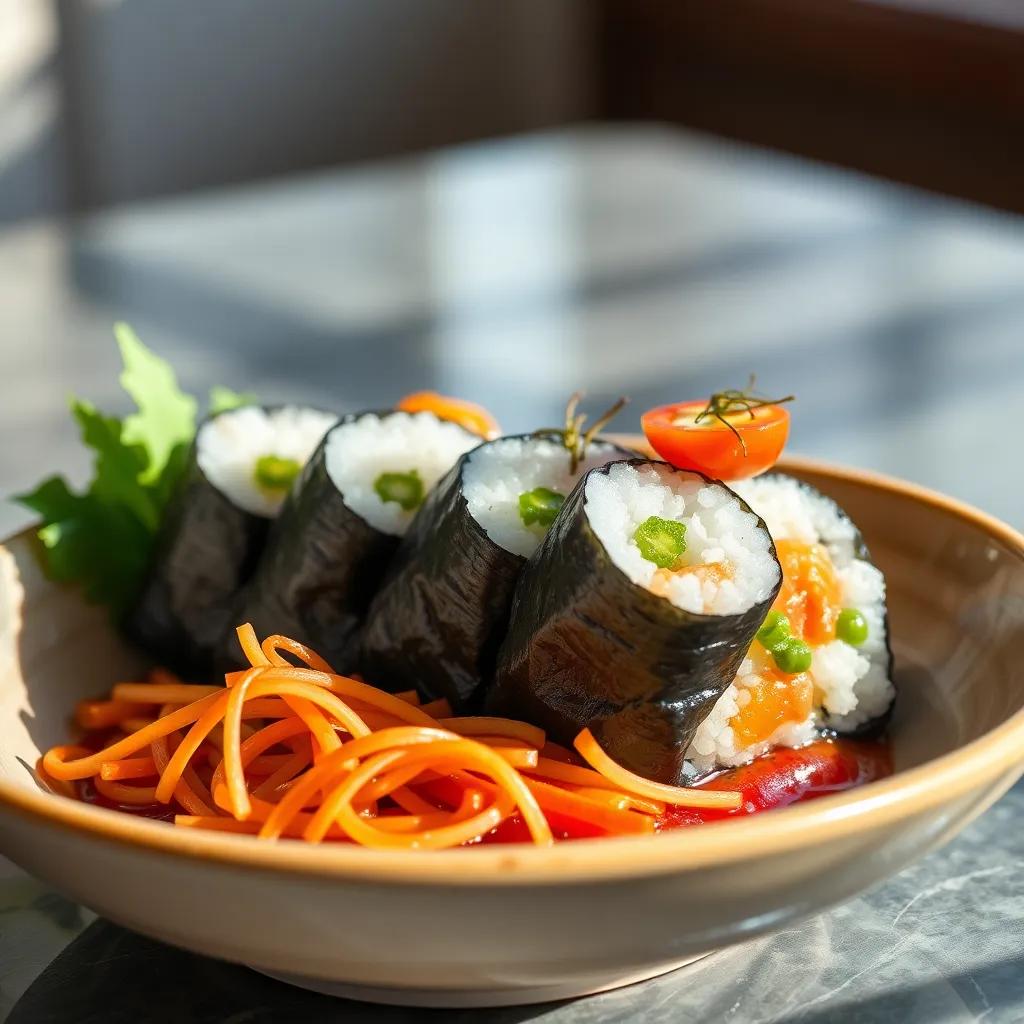
Leftovers & Storage
Leftover gimbap can be a delicious treat the next day—but because of its fresh ingredients and the nature of rice-based rolls, storing it properly is key to preserving flavor, texture, and safety. Here’s how to keep your classic gimbap fresh and ready to enjoy later:
First, wrap each roll tightly in plastic wrap right after assembling or slicing. This prevents the rice from drying out and the seaweed from becoming overly soggy or brittle. If you only have sliced pieces left, arrange them snugly in an airtight container layered with parchment or wax paper to minimize moisture buildup and sticking.
Store the wrapped or containerized gimbap in the refrigerator, ideally on a shelf rather than the door to maintain consistent temperature. Gimbap is best enjoyed within 24 hours of making it; beyond this, the rice may harden and the fresh vegetables can lose their crispness. While refrigeration slows spoilage, the texture will inevitably change the longer it sits.
Freezing gimbap isn’t generally recommended because the rice and fresh veggies don’t thaw well—they become mushy or watery, and the seaweed loses its distinctive chew. However, if you want to meal prep protein components separately (like cooked bulgogi or sautéed carrots), those freeze and reheat nicely on their own, allowing you to assemble fresh rolls later.
For packing gimbap for lunches or picnics, keep it tightly wrapped and store in an insulated lunchbox with a cool pack to maintain freshness throughout the day. To revive the texture a bit before eating, you can lightly brush leftover slices with a bit of toasted sesame oil and enjoy at room temperature—this also enhances aroma and flavor.
In summary, treat your classic gimbap with gentle care after making it to savor its best qualities. Proper wrapping, quick refrigeration, and mindful timing ensure your kid-friendly Korean rolls stay delicious, whether served immediately or saved for a handy snack later on.
Behind the Recipe
Classic gimbap carries a rich cultural heritage that dates back over a century, woven deeply into Korean daily life and celebrations. Originally inspired by Japanese sushi rolls introduced during the early 20th century, gimbap evolved uniquely in Korea by embracing local ingredients and flavors, becoming a beloved staple for both casual meals and festive outings. Its name—‘gim’ meaning seaweed, and ‘bap’ meaning rice—reflects the simplicity at the heart of this dish, yet beneath that lies a thoughtful balance of texture, taste, and tradition.
This recipe taps into that history while making the preparation approachable and fun, especially for families and children. Growing up, many Korean children—including those abroad—have fond memories of picnic days and school lunches filled with neatly rolled gimbap, each slice a little burst of color and flavor. It represents more than just food; it’s a gesture of care, often packed lovingly by parents or shared among friends during communal outings. The act of rolling gimbap itself is a gentle ritual that brings people together in the kitchen, making it an ideal dish to cook with kids and create lasting, joyful memories.
The vibrant fillings—crisp cucumber, sweet pickled radish, savory egg and bulgogi—each tell a story of Korean flavor harmony, designed to delight the palate while nourishing the body. This balance of simplicity and depth is what makes classic gimbap timeless and universally appealing. By unlocking this recipe, you’re not only making a delicious meal but also stepping into a culinary tradition that celebrates family, sharing, and the art of thoughtful, hands-on cooking.
FAQ
Can I substitute the rice with cauliflower rice for a low-carb version?
What are some kid-friendly filling ideas if my little ones don’t like certain veggies?
How do I store leftover gimbap, and how long does it stay fresh?
Can I make gimbap vegetarian or vegan-friendly?
What’s the easiest way to roll gimbap without it falling apart?
Can I reheat gimbap, and if so, what’s the best method?
Final Thoughts
Unlocking the secrets of classic gimbap opens the door to a delightful, kid-friendly Korean treat that’s as fun to make as it is to eat. With simple ingredients and endless possibilities for personalization, this recipe brings a taste of tradition right to your kitchen, inviting everyone—little hands included—to join the rolling adventure.
We’d love to hear how your gimbap journey turns out! Feel free to leave a comment, share your favorite twists, or rate the recipe to help others discover this delicious roll. After all, every great meal is better when shared. Happy rolling!










